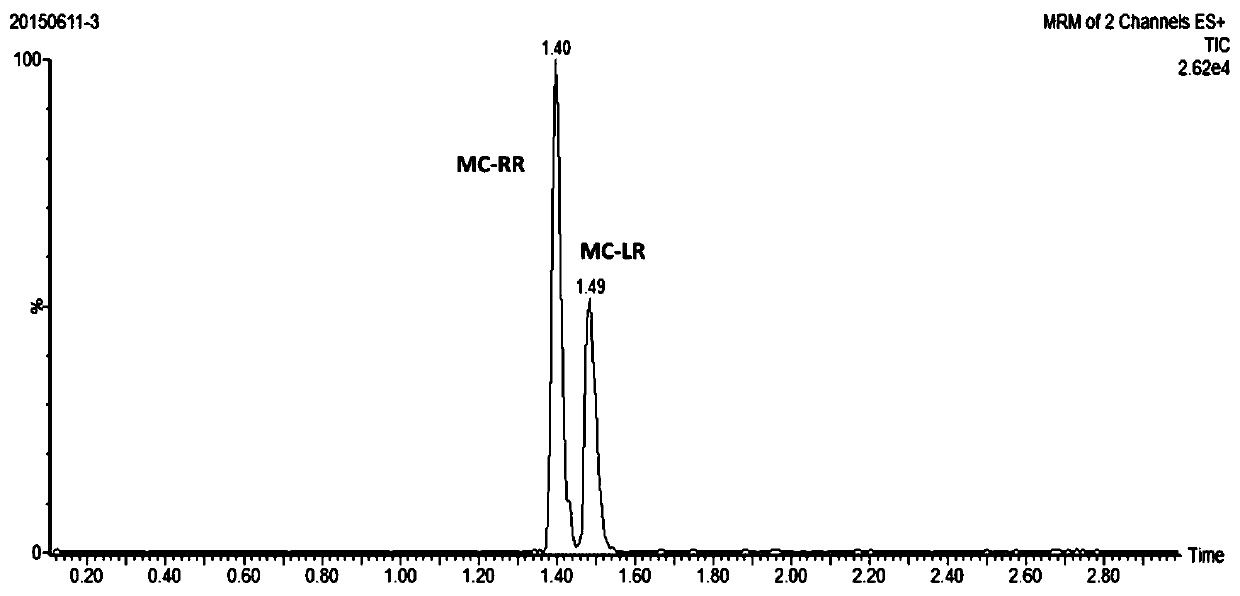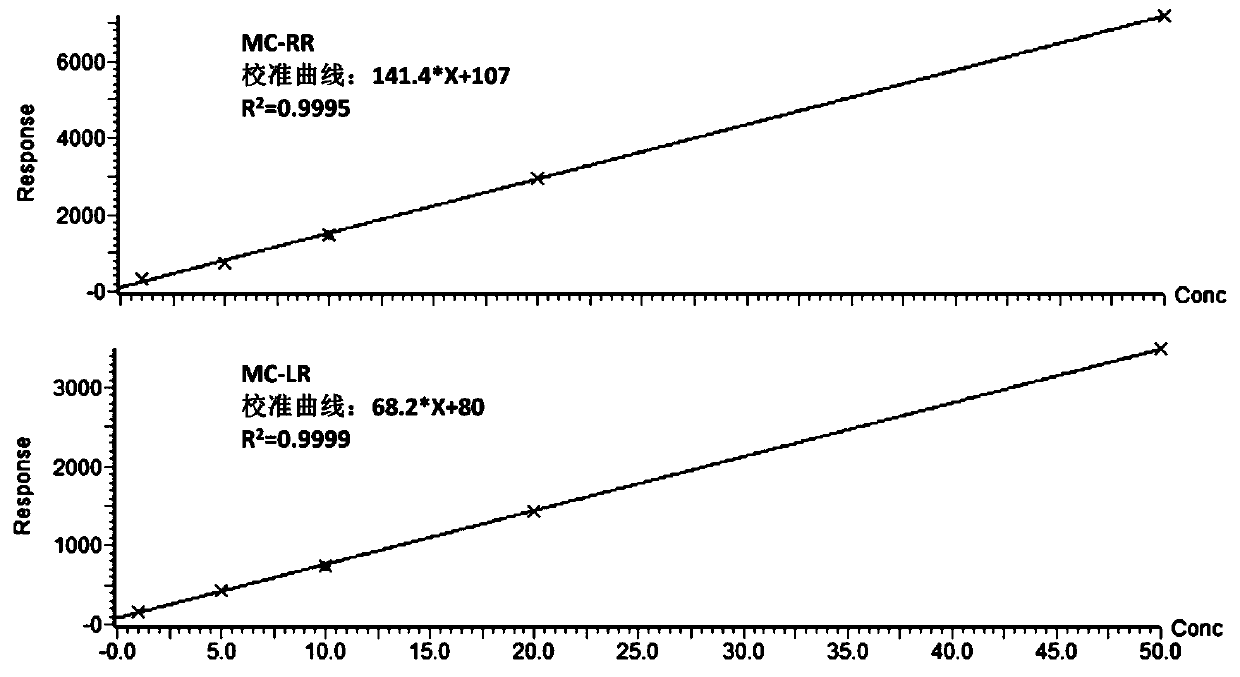A method for rapid detection of microcystin in water
A technology for microcystin and water detection, which can be applied to measurement devices, instruments, scientific instruments, etc., can solve problems such as insufficient sensitivity, and achieve the effect of improving sensitivity, good repeatability, and satisfying rapid analysis.
- Summary
- Abstract
- Description
- Claims
- Application Information
AI Technical Summary
Problems solved by technology
Method used
Image
Examples
preparation example Construction
[0034] The preparation method of the above-mentioned copper sulfide nanomaterials, the specific steps include: adding 0.2 ~ 1.0g CuSO 4 ·5H 2 O and 0.2g~1.0g polyvinylpyrrolidone (PVC) were dissolved in deionized water, and 0.1~1.0 mol / L NaOH and 1~2ml CS were added dropwise under stirring 2 After 10 minutes, it was transferred to a hydrothermal reaction kettle, kept at 140°C for 18h, cooled to room temperature after hydrothermal reaction, washed with deionized water and ethanol, and dried in vacuum at 60°C for 6h.
[0035] Ammonia and formic acid are preferably used to adjust the pH value of the water sample in the above step 1.
[0036] The conditions of use of the liquid chromatographic instrument in the above step 2 are: the liquid chromatographic instrument used is the AcquityUPLC system, and the microcystin in the sample is separated through the Acquity UPLC BEH C18 chromatographic column. The chromatographic column: Acquity UPLC BEH C18, 1.7 μm, 2.1×100mm; column temp...
Embodiment 1
[0046] Preparation of copper sulfide nanomaterials:
[0047] 0.2gCuSO 4 ·5H 2 O and 0.2 g polyvinylpyrrolidone (PVC) were dissolved in deionized water, and 0.5 mol / L NaOH and 2 ml CS were added dropwise with stirring 2 After 10 minutes, it was transferred to a hydrothermal reaction kettle, kept at 140°C for 18h, cooled to room temperature after hydrothermal reaction, washed with deionized water and ethanol, and dried in vacuum at 60°C for 6h.
Embodiment 2
[0049] Enrichment of water samples:
[0050] After the water sample was filtered through a 0.2 μm polypropylene filter membrane, 8 mg of copper sulfide nanomaterials washed with methanol and pure water were added, vortexed and mixed, and then ultrasonicated for 2 minutes for enrichment and purification. Then the water body is quickly passed through the filter, and finally eluted with pure water and methanol.
PUM
| Property | Measurement | Unit |
|---|---|---|
| Sensitivity | aaaaa | aaaaa |
Abstract
Description
Claims
Application Information
 Login to View More
Login to View More - R&D
- Intellectual Property
- Life Sciences
- Materials
- Tech Scout
- Unparalleled Data Quality
- Higher Quality Content
- 60% Fewer Hallucinations
Browse by: Latest US Patents, China's latest patents, Technical Efficacy Thesaurus, Application Domain, Technology Topic, Popular Technical Reports.
© 2025 PatSnap. All rights reserved.Legal|Privacy policy|Modern Slavery Act Transparency Statement|Sitemap|About US| Contact US: help@patsnap.com



